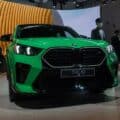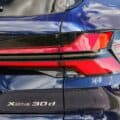Start. In the beginning was the Cugnot artillery tractor. More than one version of the three-wheeled front-wheel-drive (FWD) steamer came off the drawing boards in the second half of the eighteenth century. The apocryphal story goes to the affect that it plowed off the outside of a corner and into a wall. And thus front wheel drive and understeer have been forever linked.
The United States Enters the Fray.
Fast forward to the opening years of the twentieth century and a ‘difficult to get along with’ designer-inventor, John Walter Christie, created a series of technological-dead-end transverse-engined FWD monsters that were raced at fairgrounds across the United States. Seven is the generally accepted number of Christie’s FWD racers – of which none are known to have survived.
In the 1920s, a Kansas City businessman, Ben F. Gregory, built ten or so front wheel drive cars immediately after WW I. These cars had longitudinal mounted engines with a transmission in the nose connected to the differential in the front. Gregory employed a novel solution to allow power and steering to take place on the same axle, he adapted a de Dion tube to the front end.
In the mid 1920s, Harry Miller was approached by the board track driver extraordinaire, Jimmy Murphey, and his mechanic, Riley Brett, to build a FWD board track ‘killer’. Miller suggested a transverse engine layout, but Murphey and Brett wanted a longitudinal layout to minimize the car’s frontal area. That’s what Miller did and the Miller FWD cleaned up the competition on board tracks. Miller used Ben Gregory’s de Dion front suspension in the process. Miller’s design was the basis of the Cord L29, cleaned up by C. W. van Ranst.
What’s interesting is that Miller and Gregory worked with Christie during WW I, and Riley Brett had experience building cars in Kansas City at the end of WW I. Unfortunately, beyond those superficial connections, no real ties have been proven to exist between those men.
Up to this point FWD had been hampered by the lack of a solution to the odd pulsating motion that universal joints are subjected to when deflected at large angles. This normally isn’t a problem on non-steering wheels (or on a propshaft) since the vertical motion of suspension travel is generally less than that of the horizontal angles necessary for steering (especially on a road car).
Effect of angular displacement on universal joint. From Wiki: http://en.wikipedia.org/wiki/File:UJoint1.png
Back to France.
All roads lead to France at this juncture, even though constant velocity (CV) joints were beginning to be developed elsewhere. A firm known as Tracta was founded to build cars that demonstrated a new, easily manufactured, CV joint. It was developed by Jean-Albert Gregorie (odd there’s another ‘Gregory’ in the mix). This joint was picked up by the German firm, NAG and used in other cars, such as the Adler Trumpf. DKW also took interest in the joint and applied it to their two stroke transverse FWD ‘kleinwagen’ car. Other CV joints, such as Rzeppa (Ford) and Weiss (Bendix) were available at the same time, but Germany and France were the innovators, and the Citroen Traction Avant was recognized as something of a breakthrough.
Across the Channel.
In the mid 1950s, the automotive designer, Alex Issigonis, found himself back at Morris, now part of BMC. His brief was to lay out three new cars and work was well underway on the first two when the Suez crisis intervened. As a result of the resulting charge towards small cars, Issignois was approached by the chairman of BMC, Leonard Lord, to develop a ‘proper’ small car unlike the “bloody bubble cars”. That dovetailed neatly with Issigonis’ thinking. He’d wanted to do another small car after his well received design of the Morris Minor.
The thinking for third proposal was to maximize passenger space. Issigonis started drawing and calculating space in one of his ubiquitous sketch pads. The idea for the original Mini was to stuff five people and their gear in 10 feet of car (along with engine, transmission, differential, wheel wells, suspension, and all the other bits needed to make the car roadworthy). This constraint of the car’s length led to the two-box design that went against prevailing styling idioms.
Issigonis had previously experimented with transverse front wheel drive on a modified Morris Minor. But no one up to that point had attempted to mass produce a transverse FWD vehicle.
Issigonis utilized a Hardy-Spicer Birfield joint (a license built Rzeppa), that was being used in submarines, to send power to the front wheels. Another issue was the potential intrusion of the wheel wells on passenger space. The solution to this was sourcing a 10 inch wheel and leaning on Dunlop to build a suitably sized tire.
The suspension had to accommodate the space restrictions and the potential for the payload to equal the unladen weight of the car. Coil or leaf springs wouldn’t work and the hoped for Hydrolastic suspension wasn’t yet far enough along for a production vehicle. Instead, the initial production vehicles utilized specially developed rubber cone springs and shock absorbers. Eventually the Hydrolastic suspension was incorporated in production.
The Mini took awhile to become hip, targeted initially at adults, it took those adult’s children (British Baby Boomers) to turn it into a hit. And the Mini became the future.
Ubiquity.
The Mini started the trend towards FWD ubiquity, the FIAT 128 added momentum. While Audi and GM (Toronado and Eldorado) still used a longitudinal engine mounting, more and more manufacturers migrated to transverse FWD layouts. This was to the detriment of long standing rear-engined rear wheel drive vehicles like the FIAT 500/600/850, Renault 4CV, Chevy Corvair, and Volkswagen entire lineup.
In time all major entry and mid-market manufacturers relied on FWD for he bulk of their offerings. Significantly Mercedes-Benz and BMW did not (and while Audi and Subaru offer all-wheel-drive, those offerings are derivatives of FWD antecedents).
What Will BMW Do?
BMW has announced that they are planning on building a sub-compact (B-class) BMW-badged FWD car in addition to any of their potential ‘Project i’ cars. Why would BMW do this? The logical explanation is that emissions and fuel economy requirements in world markets require a lightweight anchor for more extravagant offerings (X5 M, 760Li, etc). To build a premium sub-compact packaging becomes paramount and the subsequent choices are FWD or rear-engined, RWD. There may be engineering reasons for choosing FWD over the alternative, but history shows that rear-engine RWD cars died when the transverse FWD layout took over.
While this new FWD BMW will be available in Europe, it’s uncertain that BMW NA will want it. This represents the potential dilution of the brand image in the North American market. And, historically, Americans have rejected premium small cars. (There are a couple of exceptions and cars like potential ‘Project i’ vehicles may have an impact here.) However, the CAFE targets of 35 MPG are looming and we’re seeing BMW’s migration to smaller, high-tech, turbocharged motors as a result. The question for BMW NA is can they make the CAFE target without the entry level FWD car. I believe that they’ll do everything in their power to meet the CAFE goal without importing a premium FWD model.




































































